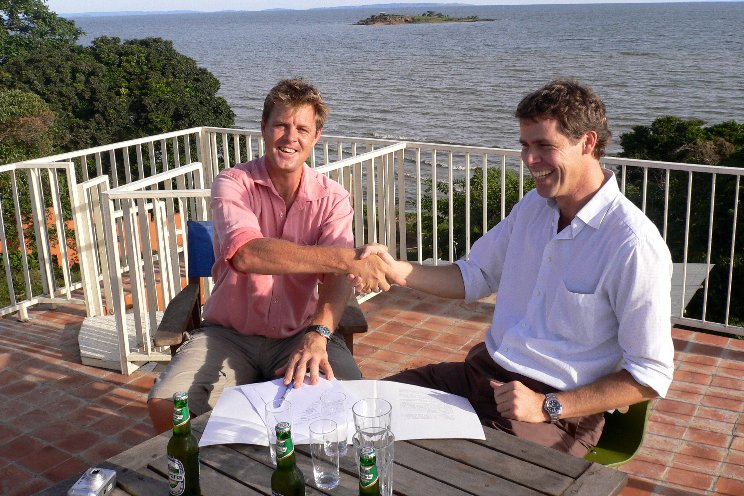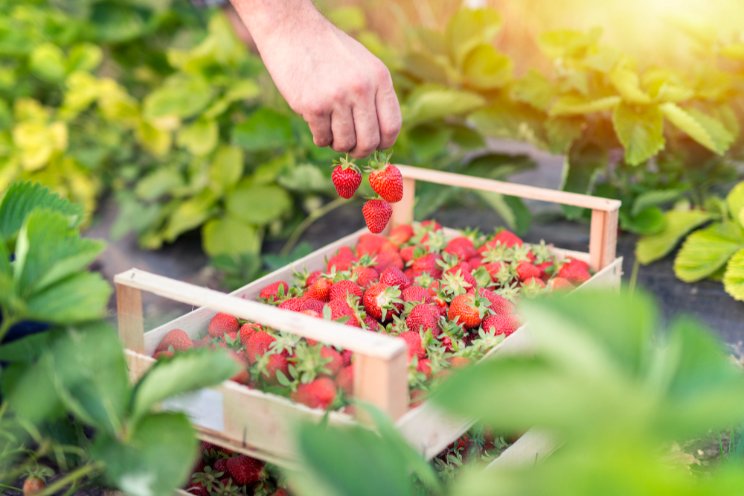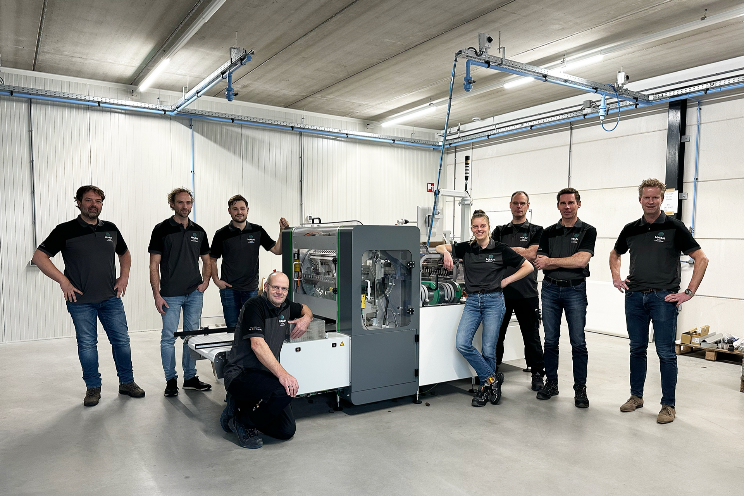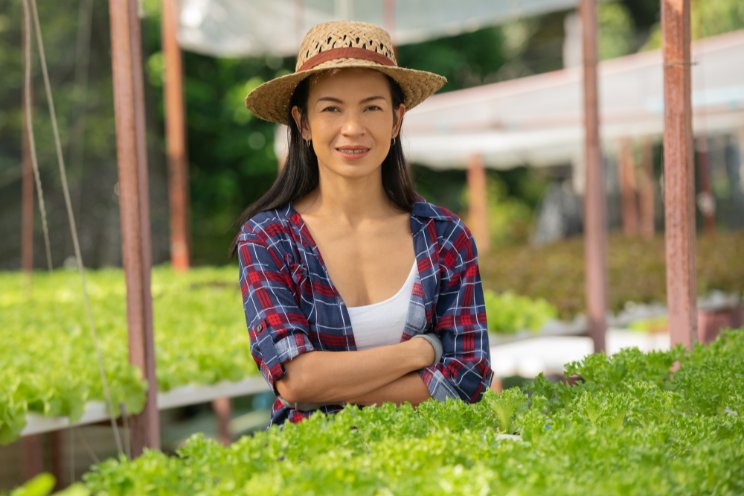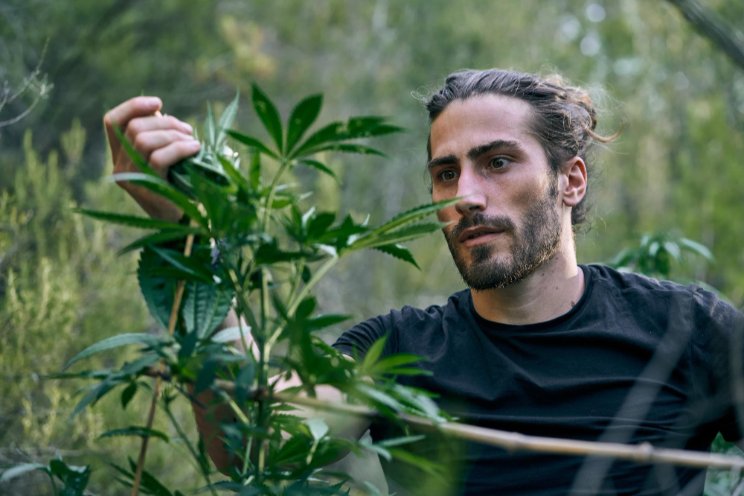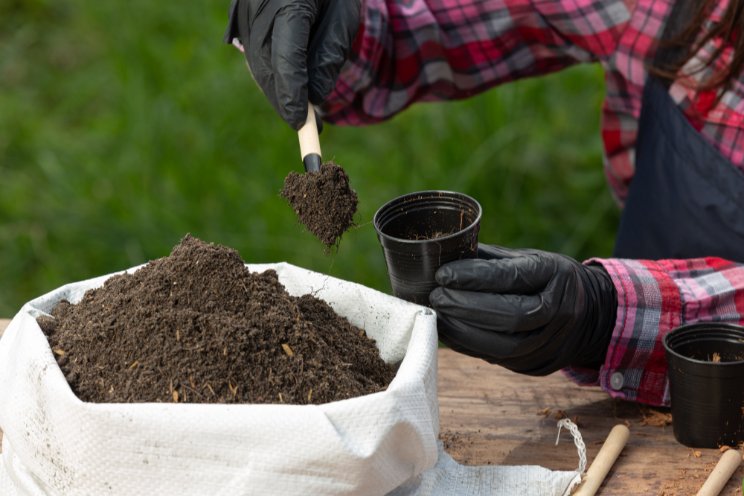Greenhouse in a sea can
Added on 11 February 2020

Betty Kogvik and Susie Kununak are making sure those little fruits — which will mark the second harvest from the community's new agricultural research station — have all the warmth and light they need, despite the dark winter outside.
<section style="box-sizing: border-box; display: block; color: rgb(68, 68, 68); font-family: Radio-Canada, "Open Sans", Arial, Helvetica, sans-serif; font-size: 16px; font-style: normal; font-variant-ligatures: normal; font-variant-caps: normal; font-weight: 400; letter-spacing: normal; orphans: 2; text-align: start; text-indent: 0px; text-transform: none; white-space: normal; widows: 2; word-spacing: 0px; -webkit-text-stroke-width: 0px; background-color: rgb(255, 255, 255); text-decoration-style: initial; text-decoration-color: initial;" id="inread-wrapper-id-6"></section>
The two women are technicians, or guardians, for a new wind and solar powered greenhouse that the Kitikmeot community named "Naurvik." That means "the growing place" in Inuinnaqtun.
The first harvest, of lettuce, grew in around four weeks. It was given to Gjoa Haven elders who have played a large role as advisors for the Naurvik project, which is led by the not-for-profit group, the Arctic Research Foundation.
"One elderly lady even danced with joy when she got her lettuce."
Betty Kogvik
"It was so fresh, not like what we get in the store. Sometimes when we get [lettuce] in the stores it is almost rotten. The ones we harvested are really fresh and tasty," Kogvik said. "One elderly lady even danced with joy when she got her lettuce."
Agriculture could grow new economy
The research station is built of two sea cans (shipping containers brought up on the summer sealift), two windmills and a row of solar panels. It has a generator for backup when the wind and sun both fall short.
It's on a hill, near a bay, in a place that elders said gets a lot of wind, and is only a few minutes ride by snowmobile from town.
Everyday, the technicians, including Kogvik's husband Sammy, spend time monitoring the station. The current harvest only uses a quarter of what the station could grow. Come summer, they want to run a trial growing cloud berry and blueberry plants, and other tundra plants used for medicine and tea.
"At the beginning, it was really confusing," Kogvik said. "We didn't know what to do, but we've got the hang of it now."
<figure style="box-sizing: border-box; display: block; margin: 0px auto 1.5rem; text-align: center; clear: both; border: 1px solid rgb(204, 204, 204); max-width: 100%; color: rgb(68, 68, 68); font-family: Radio-Canada, "Open Sans", Arial, Helvetica, sans-serif; font-size: 16px; font-style: normal; font-variant-ligatures: normal; font-variant-caps: normal; font-weight: 400; letter-spacing: normal; orphans: 2; text-indent: 0px; text-transform: none; white-space: normal; widows: 2; word-spacing: 0px; -webkit-text-stroke-width: 0px; background-color: rgb(255, 255, 255); text-decoration-style: initial; text-decoration-color: initial; width: 960px;" class="wp-caption aligncenter" aria-describedby="caption-attachment-109739" id="attachment_109739">

Naurvik technician Betty Kogvik harvests the first lettuce grown in the sea can greenhouse in Gjoa Haven. (Submitted by the Arctic Research Foundation)
</figure>
In the spring, Sammy says he wants to travel to Taloyoak to help that community start its own version of the Naurvik grow pod.
For the Arctic Research Foundation, the focus of Naurvik is on improving food insecurity, and on researching how to most efficiently grow food in remote and harsh environments, said project lead Adrian Schimnowski.
But it's also meant to foster the economy. Schimnowski said he'd like to see a local product grown to a scale where it's ready for export. For now, he's working to be able to employ and train students, as well as community-based technicians.
The foundation is funding the program with help from Agriculture and Agri-Food Canada, the National Research Council of Canada, and the Canadian Space Agency.
"It's a mini, mobile research station. We can add as we expand," said Schimnowski. "It's directed by the wishes of the community."
<figure style="box-sizing: border-box; display: block; margin: 0px auto 1.5rem; text-align: center; clear: both; border: 1px solid rgb(204, 204, 204); max-width: 100%; color: rgb(68, 68, 68); font-family: Radio-Canada, "Open Sans", Arial, Helvetica, sans-serif; font-size: 16px; font-style: normal; font-variant-ligatures: normal; font-variant-caps: normal; font-weight: 400; letter-spacing: normal; orphans: 2; text-indent: 0px; text-transform: none; white-space: normal; widows: 2; word-spacing: 0px; -webkit-text-stroke-width: 0px; background-color: rgb(255, 255, 255); text-decoration-style: initial; text-decoration-color: initial; width: 960px;" class="wp-caption aligncenter" aria-describedby="caption-attachment-109740" id="attachment_109740">

The Arctic Research Foundation is calling its new Naurvik greenhouse project in Gjoa Haven the most northern agriculture pod to be powered by wind and solar electricity. (Submitted by Thomas Surian)
</figure>
Space agency looks to Gjoa Haven
Because Naurvik is working on more efficient technology to grow vegetation in an environment it usually wouldn't survive in, that same research can also be used to help scientists understand how to grow food in harsh environments — like space.
"We are hoping to find strategies that could help astronauts grow food in space," Christian Lange, head of exploration strategic planning with the Canadian Space Agency, said in a news release. Research from "extreme or remote environments," like Gjoa Haven, could be part of that, he said.
<figure style="box-sizing: border-box; display: block; margin: 0px auto 1.5rem; text-align: center; clear: both; border: 1px solid rgb(204, 204, 204); max-width: 100%; color: rgb(68, 68, 68); font-family: Radio-Canada, "Open Sans", Arial, Helvetica, sans-serif; font-size: 16px; font-style: normal; font-variant-ligatures: normal; font-variant-caps: normal; font-weight: 400; letter-spacing: normal; orphans: 2; text-indent: 0px; text-transform: none; white-space: normal; widows: 2; word-spacing: 0px; -webkit-text-stroke-width: 0px; background-color: rgb(255, 255, 255); text-decoration-style: initial; text-decoration-color: initial; width: 960px;" class="wp-caption aligncenter" aria-describedby="caption-attachment-109741" id="attachment_109741">

This crop of potted cherry tomato plants are thriving under LED grow lights. They will be the second kind of plant harvested at the Naurvik grow pod in Gjoa Haven. (Submitted by the Arctic Research Foundation)
</figure>
The research station itself is built to be hyper-efficient, project lead Schimnowski said.
"It's very narrow and tight, similar to what it would be like in a spaceship, but everything is well organized and everything has purpose."
While gardening isn't an Inuit tradition, using the land to care for and store food is. Elders who are working with Naurvik said using the green energy to run the research station made them think of a community freezer, the kind built into the ground. Those elders said the hill near the station could be used to build a traditional freezer.
"When I first heard of [the project] I thought it would never work up here," Gjoa Haven elder Peter Akkikungnaq is quoted in the news release. "Not in this 40 below zero. Now I know anything is possible if you have the right idea … I had a taste of the vegetation. It was fresh."
Source and Photo Courtesy of Eye on the Arctic, Thomas Surian
Source: Eye on the Arctic
More news
